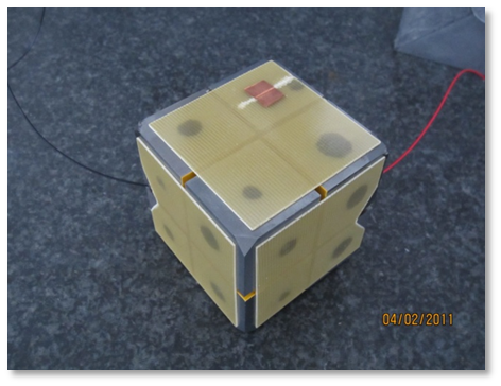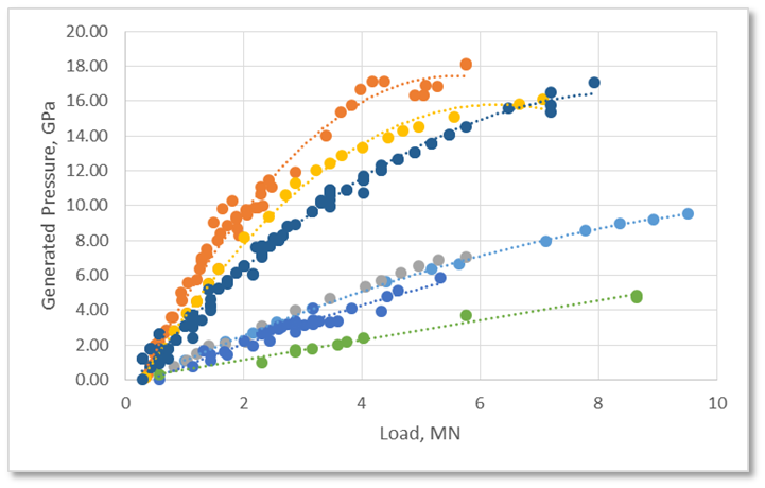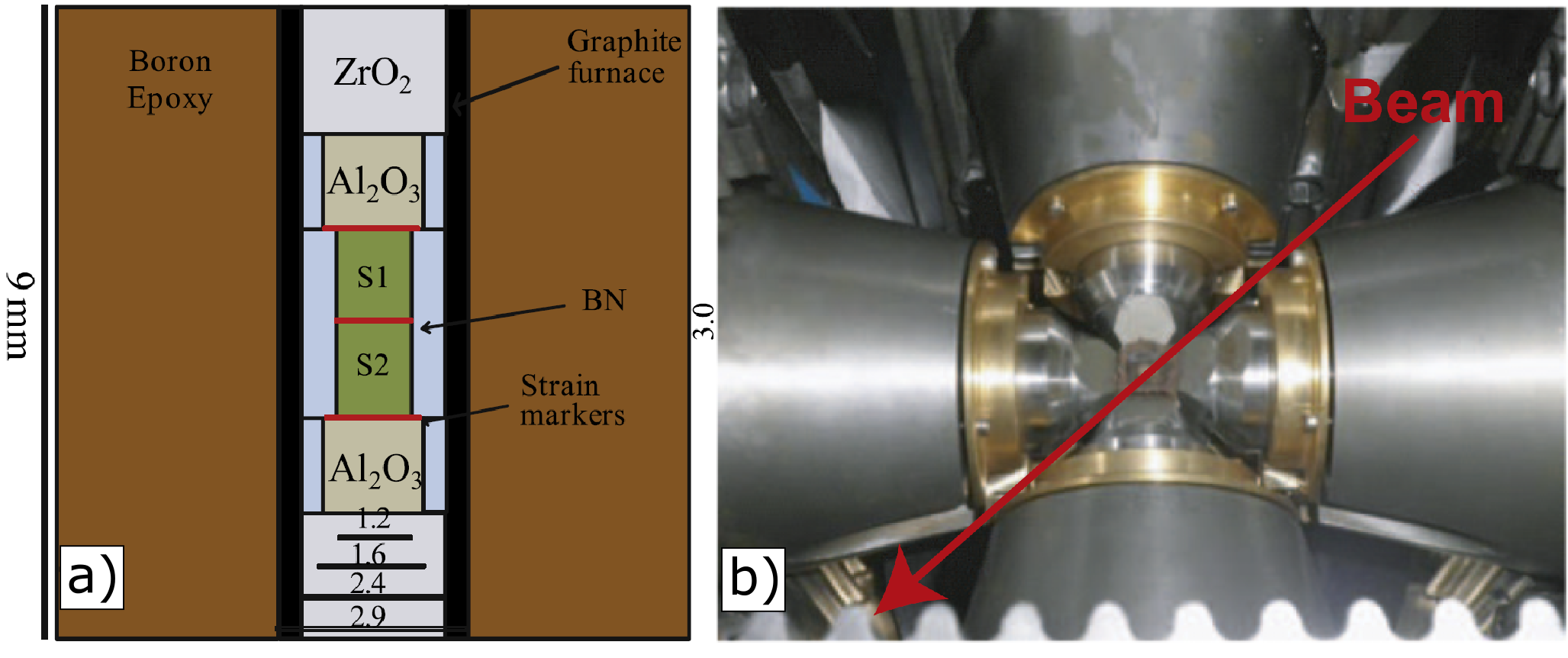- Home
- Users & Science
- Find a beamline
- Matter at extremes
- ID06 Large Volume Press
- Sample Assemblies
Sample Assemblies
6/8 assemblies (2-stage operation mode)
The 6/8 assemblies are used for a hydrostatic sample compression in a 2-stage mode. Typical experiments using this setup include chemical synthesis, phase diagram investigations, etc. ID06-LVP beamline offers a wide range of sizes for the 6/8 assemblies, including the necessary standard parts.

Figure 1. A typical User assembly for 2-stage operation with 32 mm cubes, with thermocouple (black and red wires), furnace connection (copper on top cube), card-backed gasketing (yellow regions in anvil gaps) and epoxy backing plates (off-yellow, outside). This assembly is prepared outside the press and introduced in one piece, aligned and compressed to run.
The full array of octahedron/truncation sizes offered are: 25/17 (5 GPa max), 18/11 (7 GPa max), 14/8 (9.5 GPa max), 10/5 (19 GPa max), 10/4 (20 GPa, User limit), 7/3 (30 GPa, User limit), 7/2.5 (30 GPa, User limit), which cover a range of sample volumes from > 250mm3 to about <1.5 mm3. Users are welcome to provide others, in 2- and 3-stage as 6/6 or 6/8 and 6/8/2, as their demands require, for 60 mm, 25mm or 14 mm assemblies. Calibration of the sample pressures vs press load is provided in Figure 2.

Figure 2. Pressure calibration curves for a selection of octahedron/truncation combinations. (Green) 25/17, (blue) 18/11, (blue/grey) 14/8, (dark blue) 10/4, (yellow) 7/3, (orange) 7/2.5. Data collated from User experiments and IH calibrations. Various cell constructions and components were used, pressure was determined from diffraction data.
Octahedra are invariably MgO sintered with Cr2O3 (giving effectively MgCr2O4+MgO) from Ceramic Substrates, with windows cut and replaced by an amorphous x-ray transparent non-oxide ceramic from the High Pressure Group at TU Freiberg. This material, a-SiBCN(O) provides an excellent window to the sample chamber that is without Bragg diffraction to at least 2000 K. It does, however, react with transition row metals (Re, Ni, Fe). Alternative octahedra are dependent on User provision and we have used in several instances TU Freiberg’s proprietary m-ZrO2 sinters, MgO:Co and pyrophyllite.
Graphite furnaces are preferrentially used for the 6/8 experiments, while the transition metal or LaCrO3 ones are possible as well. Electrical and thermal insulation of the sample is ensured by usage of BN sleeves (around the sample capsules or as sample containers) as well as ZrO2 or MgO rods. The latter are inserted above and below the sample and thus are out of the beam path.
Gasketing is long-short style, for simplicity and all the gaskets are made in-house on pyrophyllite furnished by Ceramic Substrates that is delivered in plates of specified thickness according to eventual use. They are then machined on our desktop milling machines, which is particularly cost-effective and ensures rapid production. Hardened pyrophyllite sees occasional use (for 2.5 mm and 3 mm truncations) as does a special sinter of MgO produced by Ceramic Substrates for us.
Backing plates are either mica or mica-calendared Nomex sheets, or epoxy upon User provision.
Deformation setup (1 stage operation mode)
The deformation experiments at ID06-LVP are normally conducted in a 1-stage mode using boron epoxy cubic pressure cells (Figure 3 (a)). Cubes of 9 mm size are used with 6 mm-truncated SD and WC anvils, while 4- and 3-mm truncated anvils require 6 mm pressure cells. The assembly can be adapted to the needs of Users (for instance, by cutting Al2O3 pistons and the sample at 45 degrees for shear experiments). One-stage operation is uniquely in 6/6. Maximum pressures for deformation are 14-15 GPa.

Figure 3. (a) A typical 9 mm assembly used for deformation experiments. (b) Position of a 9 mm cube between 6 mm-truncated anvils with respect to the beam trajectory. Taken from Guignard, J., and W. A. Crichton, Rev. Sci. Instrum. (86), 2015.



